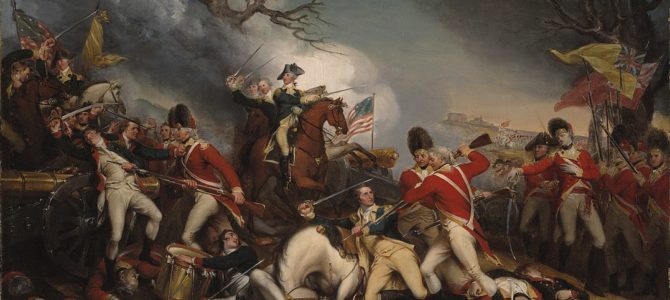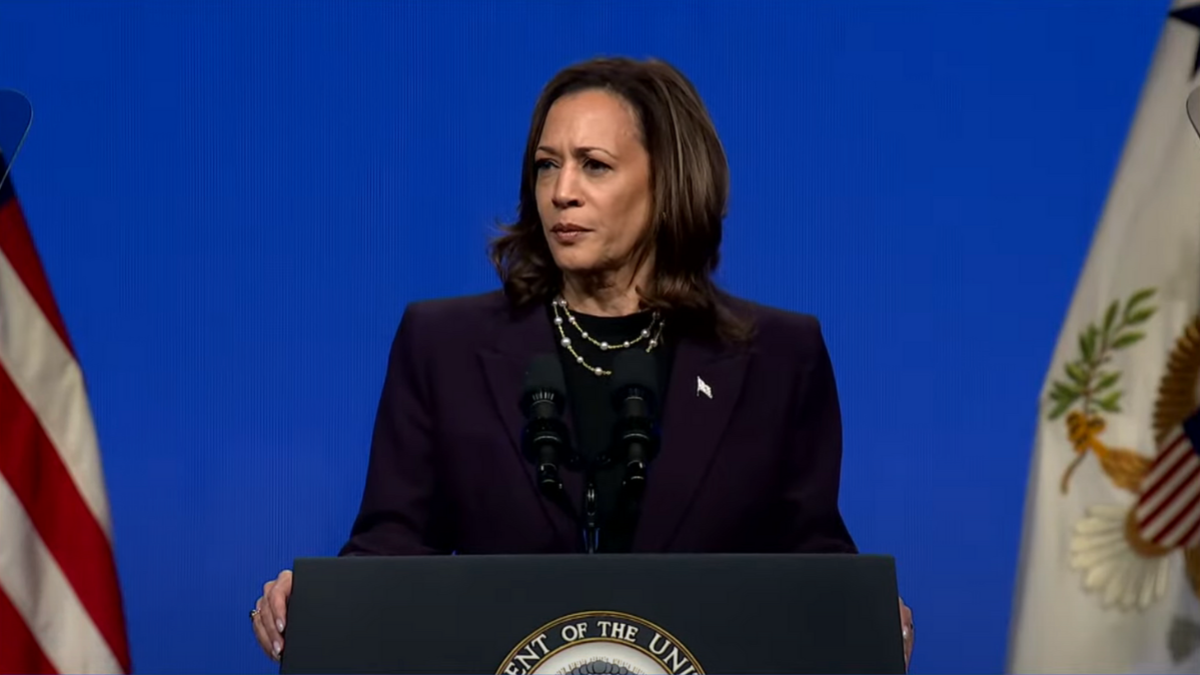
Last week, in Miller v. Bonta, U.S. District Court Judge Roger Benitez struck down California’s ban on so-called “assault weapons,” such as the ubiquitous AR-15, as a violation of the right of individuals to keep and bear arms for the militia purposes of defense against tyranny, insurrection, and invasion, as well as for self-defense against the more common variety of criminals.
Understanding that the Second Amendment was not adopted to protect hobbies and recreation, Judge Benitez implicitly rejected the notion, suggested by some, that AR-15s — semi-automatic variants of the automatic M16s used by the armed forces — are merely “modern sporting rifles,” instead concluding:
[T]he popular AR-15 rifle is a perfect combination of home defense weapon and homeland defense equipment. Good for both home and battle … Therefore, this Court declares the California statutes to be unconstitutional. …
The Second Amendment protects any law-abiding citizen’s right … to be armed to defend himself, his family, and his home. At the same time, the Second Amendment protects a citizen’s right to keep and bear arms to use should the militia be needed to fight against invaders, terrorists, and tyrants. …
The evidence is clear … that the AR-15 … bears a reasonable relationship to the preservation and efficiency, as well as the effectiveness, of a modern well-regulated militia. It is therefore categorically protected by the Second Amendment. …
[T]he evidence overwhelmingly shows that AR-15 platform rifles are ideal for use in both the citizens’ militia and a state-organized militia. Quite apart from its practicality as a peacekeeping arm for home-defense, [it] can also be useful for war. In fact, it is an ideal firearm for militia service … It is therefore categorically protected by the Second Amendment.
Although the Supreme Court pretended otherwise in District of Columbia v. Heller (2008), defense against tyranny, not merely against criminals, is the primary reason the keeping and bearing of arms is expressly protected within the Bill of Rights. For example, in “That Every Man Be Armed,” constitutional scholar Stephen P. Halbrook noted:
Ten days after the Bill of Rights was proposed in the House (of Representatives), Tench Coxe published his ‘Remarks on the First Part of the Amendments to the Federal Constitution,’ under the pen name ‘A Pennsylvanian,’ in the Philadelphia Federal Gazette. Probably the most complete exposition of the Bill of Rights to be published during its ratification period, the ‘Remarks’ included the following: ‘As civil rulers, not having their duty to the people duly before them, may attempt to tyrannize, and as the military forces which must be occasionally raised to defend our country, might pervert their power to the injury of their fellow-citizens, the people are confirmed by the [Second Amendment] in their right to keep and bear their private arms.’
The Legal Trail Ahead
California will appeal Judge Benitez’s decision to the activist Ninth Circuit Court of Appeals, which has often issued adverse Second Amendment rulings, and might be expected to do so in this instance. Already, however, an earlier decision overturning the gun ban, by the U.S. District Court for the Central District of California, in Rupp v. Becerra, is pending at the Ninth Circuit. Yet another decision from Judge Benitez, Duncan v. Becerra, overturning California’s ban on standard-capacity ammunition magazines common to AR-15s, comparable rifles, and countless semi-automatic pistols, has been upheld by a three-judge panel at the Ninth Circuit and is pending en banc review.
Of course, all of these cases could end up being appealed to the Supreme Court, but the court has already refused to take several cases challenging “assault weapon” bans in other states. Assuming the court took one or more of the California cases, however, it would have the opportunity to correct errors it made in Heller, which otherwise could be the basis for prohibiting defensive arms of the future.
On the one hand, Heller correctly said the right to arms is individually held and not contingent on active duty in a local, state, or federal militia. Explaining the Second Amendment’s text for those who, because they don’t like it, pretend it is unclear, it said:
The Second Amendment is naturally divided into two parts: its prefatory clause and its operative clause. The former does not limit the latter grammatically, but rather announces a purpose. The Amendment could be rephrased, ‘Because a well regulated Militia is necessary to the security of a free State, the right of the people to keep and bear Arms shall not be infringed.’
It added that at the time of the nation’s founding:
It was understood across the political spectrum that the right helped to secure the ideal of a citizen militia, which might be necessary to oppose an oppressive military force if the constitutional order broke down. It is therefore entirely sensible that the Second Amendment’s prefatory clause announces the purpose for which the right was codified: to prevent elimination of the militia.
On the other hand, Heller mischaracterized the Supreme Court’s decision in U.S. v. Miller (1939), to say that the right to arms is limited to arms that are already “in common use,” a notion that Justice Stephen Breyer correctly ridiculed in his dissent.
It is true that U.S. v. Miller observed that “when called for service [militia members] were expected to appear bearing arms supplied by themselves and of the kind in common use at the time.” But far more importantly, it recognized that the right to arms includes arms that “have some reasonable relationship to the preservation or efficiency of a well regulated militia,” such as those that are “part of the ordinary military equipment” and any others the use of which “could contribute to the common defense.”
In support of that, the court cited the decision of the Tennessee Supreme Court in Aymette v. State (1840), that the right includes arms “such as are usually employed in civilized warfare, and that constitute the ordinary military equipment. If the citizens have these arms in their hands, they are prepared in the best possible manner to repel any encroachments upon their rights by those in authority.”
Recognizing that the Supreme Court might apply Heller’s “common use” test to AR-15s and other firearms banned by California, Judge Benitez noted that the rifles probably outnumber Ford F-150 pickup trucks, adding:
The overwhelming majority of citizens who own and keep the popular AR-15 rifle and its many variants do so for lawful purposes, including self-defense at home. Under Heller, that is all that is needed. Using the easy to understand Heller test, it is obvious that the California assault weapon ban is unconstitutional. Under the Heller test, judicial review can end right here.
Why ‘Common Use’?
Heller invented its “common use” test to pretend to justify a ban on “weapons that are most useful in military service,” such as the M16, the automatic rifle from which the semi-automatic AR-15 is derived. Automatic firearms are not as commonly owned as many other types of firearms, because the 1968 Gun Control Act prohibited their importation for private purposes, and a 1986 law prohibits the private possession of any manufactured after May 19, 1986.
Automatic firearms should not have been brought up in Heller, because the case was concerned with only the District of Columbia’s bans on handguns, on having any firearm in operable condition within the home (thus useful for self-defense), and on carrying a handgun within the home without a permit, which the District refused to issue.
However, during oral arguments before the court, then-Solicitor General Paul Clement answered a question by the late Justice Ruth Bader Ginsburg by saying the right to arms doesn’t include all arms. Referring first to firearms that exist only in the imagination of anti-gun activists, politicians, and collaborators in the media, then to “machine guns,” Clement said:
Absolutely, Justice Ginsburg … we would take the position that the kind of plastic guns or guns that are specifically designed to evade metal detectors that are prohibited by Federal law are not ‘arms’ within the meaning of the Second Amendment and are not protected at all … I think to make the same argument about machine guns would be a much more difficult argument, to say the least, given that they are the standard-issue weapon for today’s armed forces and the State-organized militia [the National Guard].
Then, in an exchange with the late Justice Antonin Scalia:
Justice Scalia: Is there any federal exclusion of weapons that applies to weapons that are commonly held today? I don’t know what you’re worried about. Machine guns, what else?
General Clement: Well, Justice Scalia … I think it is more than a little difficult to say that the one arm that’s not protected by the Second Amendment is that which is the standard issue armament for the National Guard, and that’s what the machine gun is.
Then, in an exchange with Justice Ginsburg and now-retired Justice Anthony Kennedy, Mr. Heller’s ostensibly pro-Second Amendment lawyer, Alan Gura, bafflingly explained how the government could justify banning automatics.
Gura: [T]he government can ban arms that are not appropriate for civilian use. There is no question of that.
Justice Kennedy: That are not appropriate?
Justice Ginsburg: For example?
Gura: For example, I think machine guns. It’s difficult to imagine a construction of Miller, or a construction of the lower court’s opinion, that would sanction machine guns or the plastic, undetectable handguns that the Solicitor General spoke of…
Justice Ginsburg: But why wouldn’t the machine gun qualify? General Clement told us that’s standard issue in the military.
Gura: But it’s not an arm of the type that people might be expected to possess commonly in ordinary use.
Heller adopted the nonsense whole cloth. Ironically, the opinion was written by Justice Scalia, renowned as the court’s great originalist. Ironic, in that there is nothing in the legislative history of the Second Amendment to support a “common use” test.
As Judge Benitez wrote, “The command of the Amendment is that the right to keep and bear arms ‘shall not be infringed.’” Not some arms, but “Arms.” And not “infringed too much,” but “infringed” at all.









